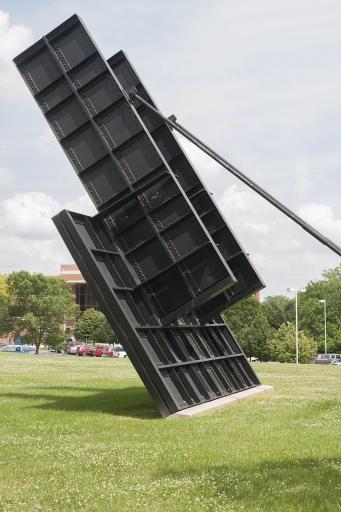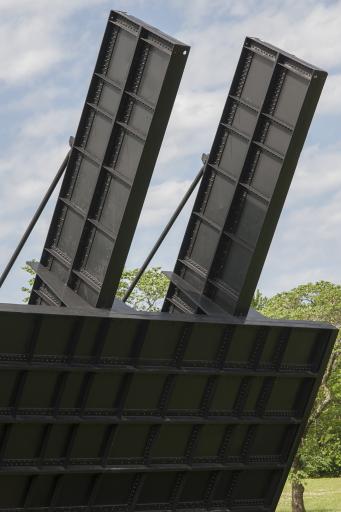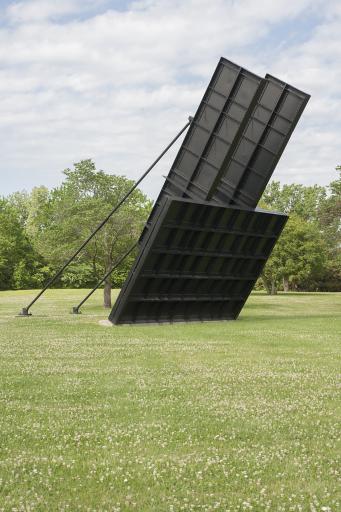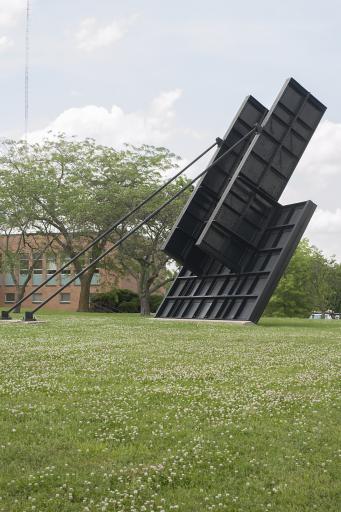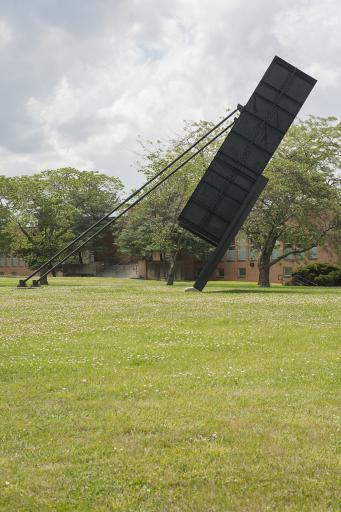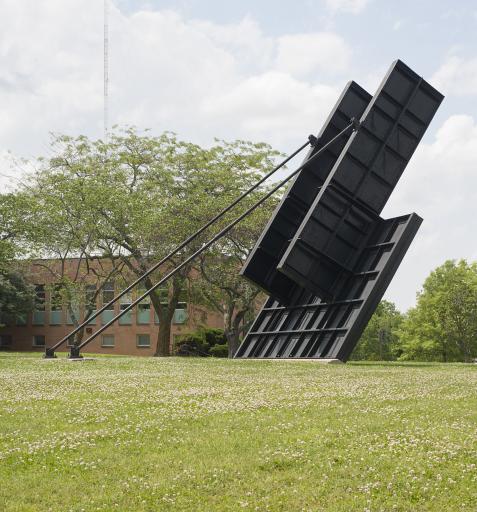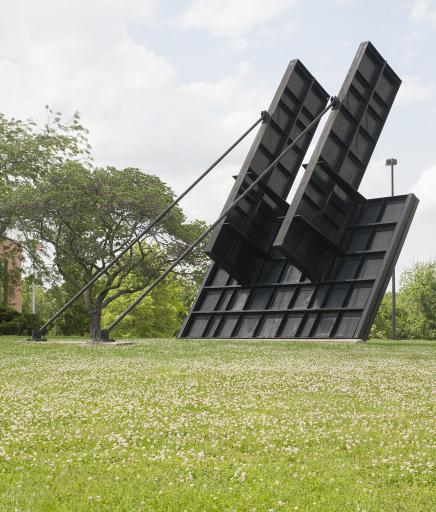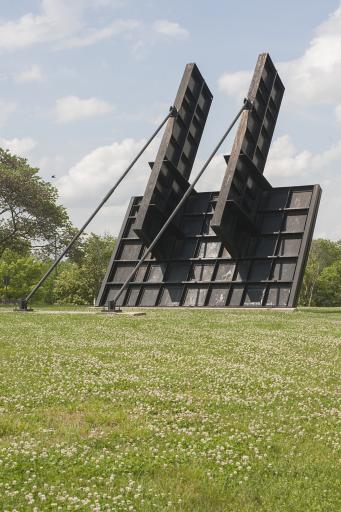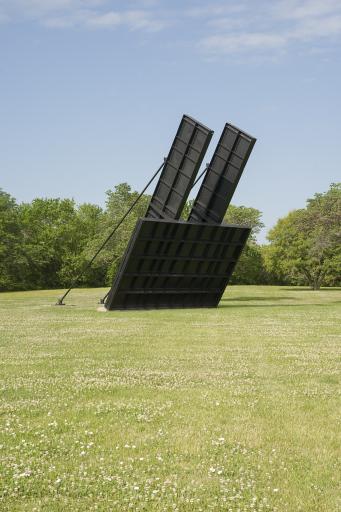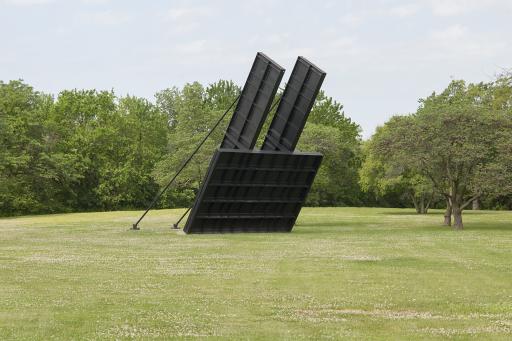Salina Piece, Dale Eldred
Artwork Overview
Dale Eldred, artist
1933–1993
Salina Piece,
1969
Where object was made: United States
Material/technique: Cor-ten steel; asphaltum paint
Dimensions:
Object Height/Width/Depth (Height x Width x Depth): 10.7 x 7.3 x 10.4 m
Object Height/Width/Depth (Height x Width x Depth): 35 x 24 x 34 ft
Object Height/Width/Depth (Height x Width x Depth): 10.7 x 7.3 x 10.4 m
Object Height/Width/Depth (Height x Width x Depth): 35 x 24 x 34 ft
Credit line: Gift of Mr. and Mrs. John M. Simpson
Accession number: 1981.0005
On display: outdoors West Campus south of KUCR
If you wish to reproduce this image, please submit an image request

